How to Grow Beans All Summer Long
Planting an array of varieties keeps the harvest coming
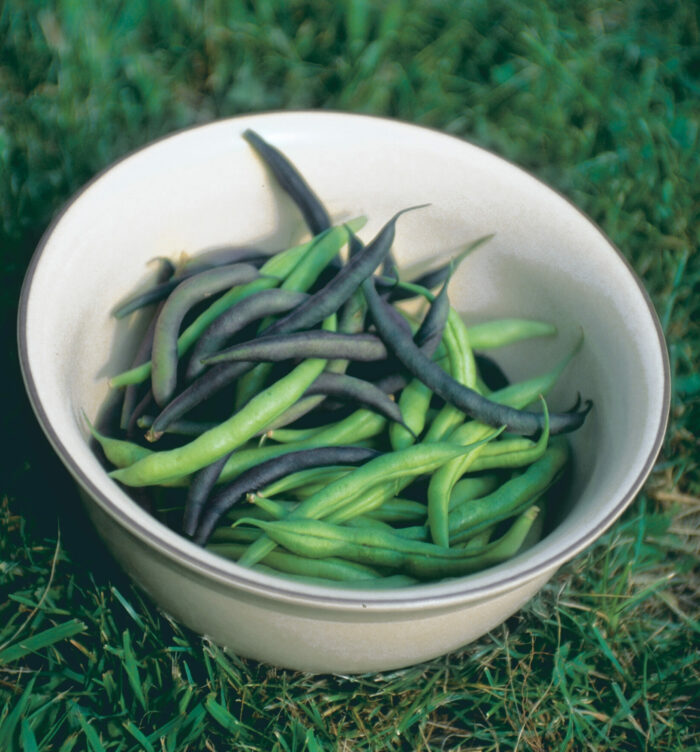
In my father’s victory garden, we planted a single crop of beans in late spring. The endless rows came in all at once, and we spent a long, hot week harvesting the beans. And while I love the taste of fresh snap beans, enough is enough. I’d rather have a number of smaller, more manageable crops of beans.
To ensure a steady supply from my modest side-yard garden, I sow bush beans every few weeks from late April until August. By sowing the beans in wide swaths, rather than in single rows, I save garden space, increase production, conserve soil moisture, and smother weeds. And by planting early-, mid-, and late-season varieties, I keep beans in production from June until late fall.
Bush snap beans are the perfect succession crop because most varieties mature in a mere 45 to 55 days, compared with the 60 to 90 days typical for pole beans. Although pole beans require less garden space than bush beans, they produce only one crop in the same space in which I can harvest two or three crops of bush beans. Most of the bush varieties produce beans for 10 to 14 days. When production ceases, I pull out the spent plants and sow another planting. After pulling out the last of the beans, I often plant radishes, spinach, or another quick cool-weather crop.
Know the bean basics
|
Variety is the key to succession planting
Although bush beans are essentially a warm-weather crop, some varieties tolerate cooler temperatures, and others continue to thrive even when the weather turns sizzling hot. To keep my bean bed producing consistently, I select several varieties to take advantage of each part of the growing season. Every year, I experiment with new varieties, always looking for heavier production and improved flavor.
I sow early-season varieties by the outset of summer. My favorite early snap beans are the purple varieties ‘Royal Burgundy’ and ‘Purple Queen’, which tolerate cool soil better than most bush beans and produce over a long period. These beans are attractive in the garden, producing wonderful purple pods on dark green foliage. The purple varieties are also pest resistant. I’ve seen bean beetles all over green beans but not on the purple beans growing right beside them. ‘Provider’ germinates well in cool soil and is usually the first green bean I plant in spring, although I’ve found that it’s not as dependable as the purple varieties.
To pack your freezer, try planting heavy-bearing midseason varieties. ‘Topcrop’ and ‘Derby’, both All-America Selections Winners because they’ve performed well in test gardens around the country, and ‘Venture’, an early Blue Lake type, are my main crops. They’re the ones I prize most for superb flavor. I fill my freezer with these green varieties because they produce heavy yields of meaty beans. ‘Derby’ is super tender and fiberless because of its extra-slow seed growth. But for flavor, crispness, and overall dependability, ‘Venture’ is my favorite green bush bean; it’s in my garden every year.

I don’t find wax beans as flavorful as other bush beans, so I don’t plant as many of them. The most dependable bush wax bean for me, and the earliest one I grow, is ‘Rocdor’, which matures in 50 days. ‘Gold Rush’ and ‘Romano Gold’ are my main yellow wax crops. Both are heavy producers.
Late-season varieties keep the bean bed producing into fall. As the year progresses and the weather is consistently hot and dry, ‘Improved Tendergreen’ and ‘Contender’ are the hardiest green beans in my garden. Both tolerate heat and are recommended for late plantings. ‘Contender’ is the fastest-producing bush bean I grow, maturing in 40 days. It’s usually the last variety I plant, sowing in August for harvest before the first fall frost.
Many bush beans slow or halt production as the summer progresses because their blossoms won’t set in extremely hot weather. But the flat-podded bush Romano types remain robust. Their full flavor and rougher texture are quite different from those of other bush beans. I plant ‘Roma II’ on occasion, but my favorite flat-podded bush bean, by far, is ‘Gina’. The flat pods can grow 1 foot long and 1 inch wide, but they’re at their best when they are 6 to 8 inches long. The plants grow 18 inches tall, and the heavy pods often cause the plants to flop over. I provide some kind of support, such as twine between stakes or twigs twisted into the ground next to the plants. This year, as an experiment, I planted corn to help support two wide rows of ‘Gina’ beans.
Grow a Different Kind of Bush Bean
Dry bush beans are easy to grow and are a nice addition to rows of traditional bean plants. Unlike snap varieties, these beans are grown specifically for being used dry in soups and stews. Direct-sow the seeds and keep the plants watered and weeded, and you will be rewarded with 20 bean pods per plant, with four to eight beans per pod. Do not pick these beans until their pods turn brown and the outer casing splits open when squeezed between your thumb and forefinger.
Two excellent varieties are ‘Money’ and ‘Jacob’s Cattle’. These are great for short-season gardens and can grow up to 2 feet tall. Originating in England, ‘Money’ is a thick, kidney-shaped white bean with dark red splotches. ‘Jacob’s Cattle’ is an heirloom of unknown origin; it is a slender bean that is white with red splashes. Both beans swell to three times their size and maintain their shape when cooked, and they have a delicious, rich, nutty flavor.
—Keith Crotz is a board member of Seed Savers Exchange and grows many types of beans on his family’s centennial farm in Chillicothe, Illinois.
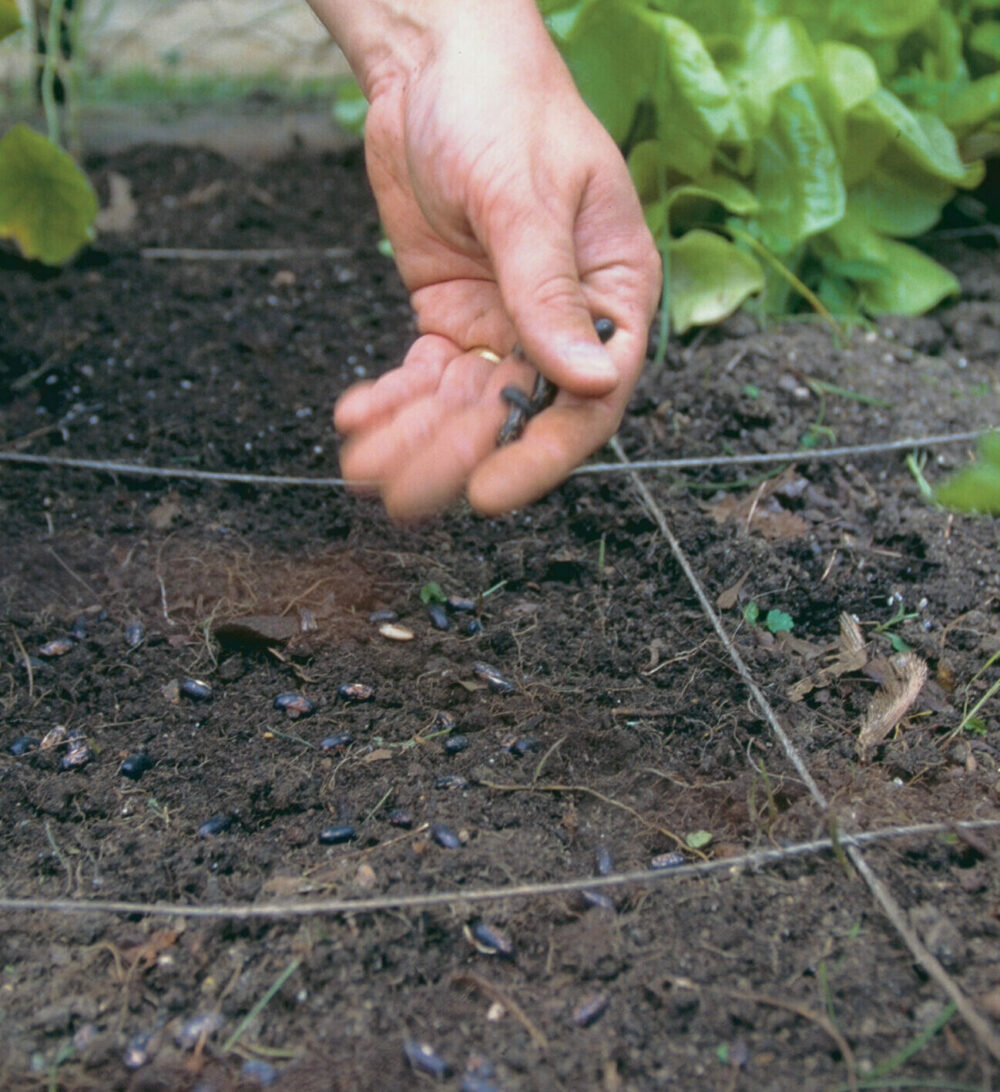
Don’t rush to plant, and water well
I plant early-season varieties soon after the last expected frost, which is mid-April here in Delaware. Most other varieties suffer poor germination if the soil is below 55°F, so I wait until the soil temperature is around 60°F before sowing. If the beans don’t sprout within two weeks, they’ve probably rotted in soil that’s too wet and cold. Replanting is the only solution.
I plant bush beans in a raised bed that receives full sun. I work the bed to a depth of 8 inches, mixing in coarse sand and compost to loosen the soil. Bean plants aren’t heavy feeders, but they do need friable soil for germination and root development. The idea is to loosen the soil but not to overfertilize it; otherwise, the plants will leaf out at the expense of pod production. The soil should drain well and not stay wet for long periods. Once the bed is prepared, I avoid stepping in it; compacted soil hinders germination.

To plant bush beans, I simply rake smooth a 1-foot-wide swath, then scatter the seeds so that they fall roughly 1 inch apart. With my finger, I poke each seed into the soil to a depth of 1 inch (2 inches in the summer). Because bush beans thrive in crowded conditions, I don’t bother thinning the seedlings when they come up. Once the beans are established, watering is my foremost consideration. Too much or too little moisture may cause blossom and pod drop. When the seedlings pop out of the soil, I immediately mulch around them with clean straw or sifted compost to conserve soil moisture.
The critical times for watering are during germination, pollination, and pod production. Give bush beans 1 inch of water each week, more during drought periods. Beans perform best if given a deep soaking once a week, preferably in the morning so that the foliage can dry out.

Harvest often for peak flavor
My bean crops rarely have pests or diseases. To combat anthracnose, bacterial blights, and mosaic, I keep my hands away from the plants when they are wet; this prevents transferring diseases throughout the bed. Most of the varieties I’ve mentioned resist soil-borne diseases. Still, to avoid these diseases, I never plant beans in the same bed two years in a row.
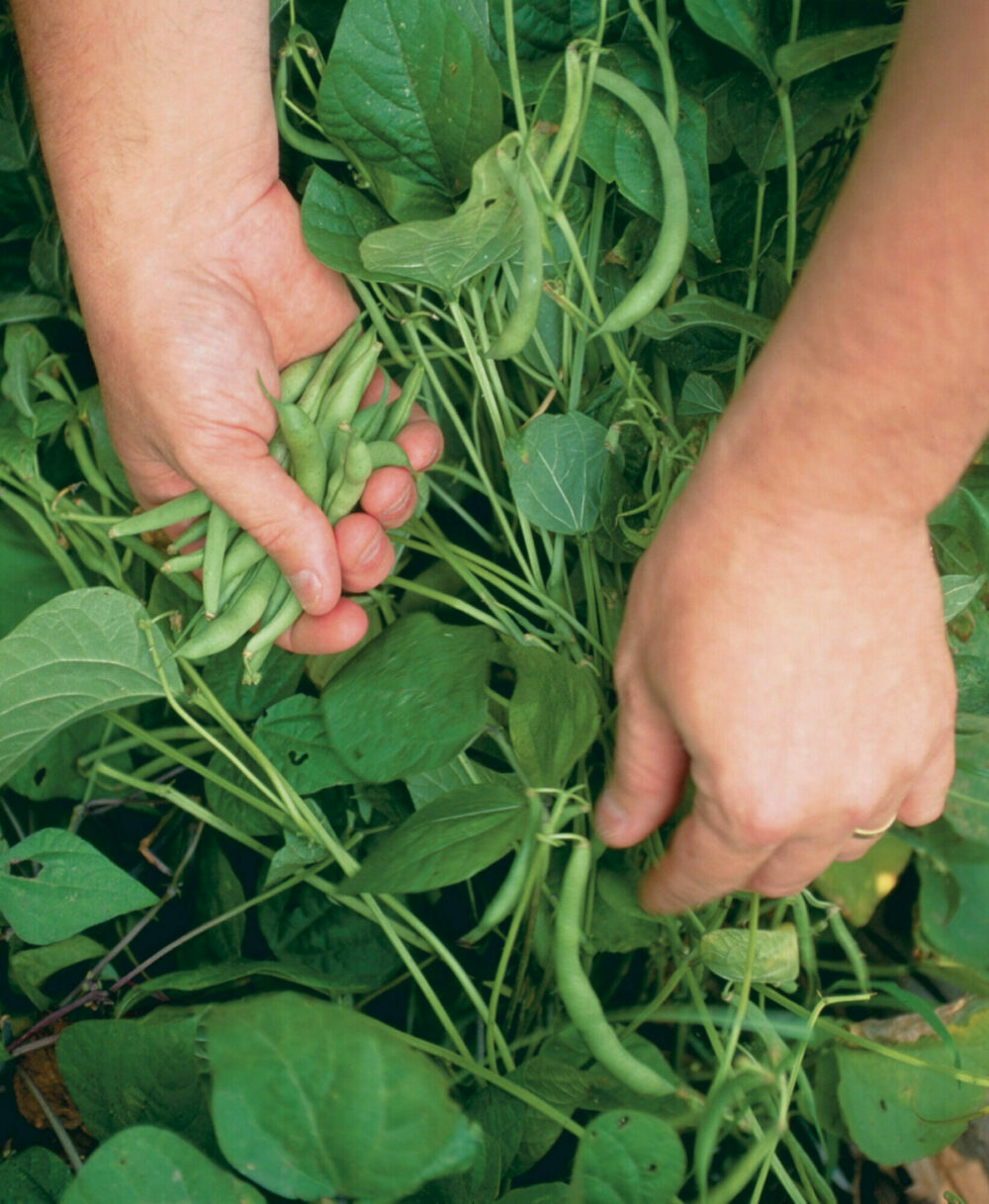
Like most vegetables, bush snap beans taste better when picked slightly immature. For the best flavor and “snap,” I harvest the pods when they’re young, slim, and firm—about the diameter of a pencil. The seeds should be barely visible in their pods, the tips of the pod should be soft, and the pods should snap crisply. I try to pick beans in the morning because the plants store sugars—and, thus, flavor—overnight.
To ensure that the plants continue producing, I pick the beans every two or three days during the peak of harvest. If the beans are left to grow too large, the plants produce a hormone that inhibits blossoming.
Although fresh beans taste best, I always have a harvest that exceeds my family’s immediate needs. Luckily, snap beans are easy to freeze. I simply stem and wash the beans in cold running water, snap them in half, and blanch them in boiling water for three minutes. I then immediately cool the beans in an ice-water bath to halt the cooking, drain them in a colander, and pack them in freezer bags. My family enjoys homegrown beans from the freezer during the winter and into spring, when fresh beans will be growing in my next garden.
Succession Planting Ensures a Continual Harvest
Stagger the planting of early-, mid-, and late-season varieties to get two crops in each bed and fresh beans all summer long.
Weldon Burge grows vegetables in his small but prolific garden in Newark, Delaware.
Photos, except where noted: Steven Cominsky
Fine Gardening Recommended Products
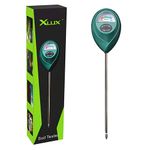
XLUX Soil Moisture Meter
Fine Gardening receives a commission for items purchased through links on this site, including Amazon Associates and other affiliate advertising programs.
- Simply insert the moisture meter into soil and you'll get the test result instantly
- Single probe, less hurts to the roots, doesn't dig up too much soil after test
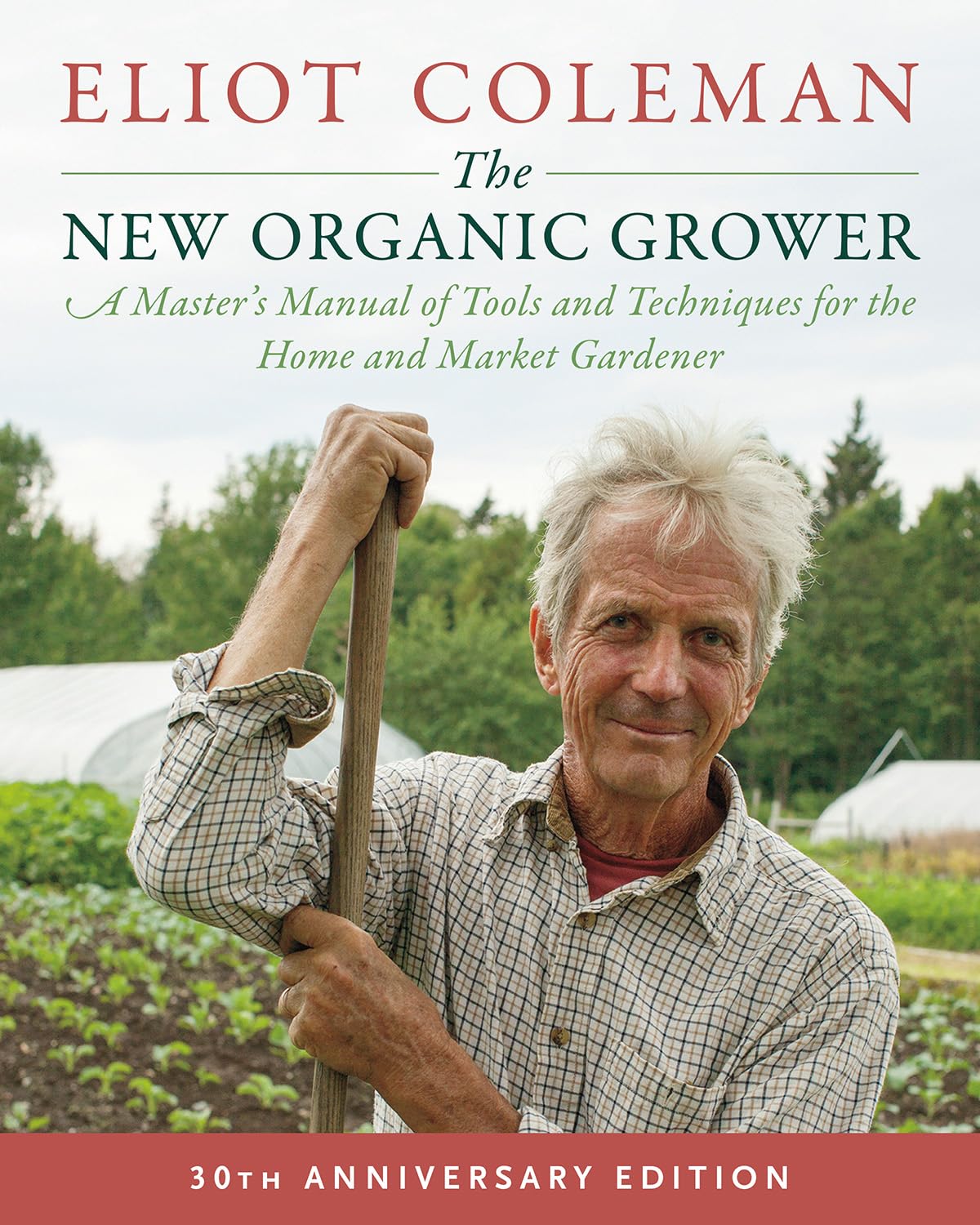
The New Organic Grower, 3rd Edition: A Master's Manual of Tools and Techniques for the Home and Market Gardener, 30th Anniversary Edition
Fine Gardening receives a commission for items purchased through links on this site, including Amazon Associates and other affiliate advertising programs.
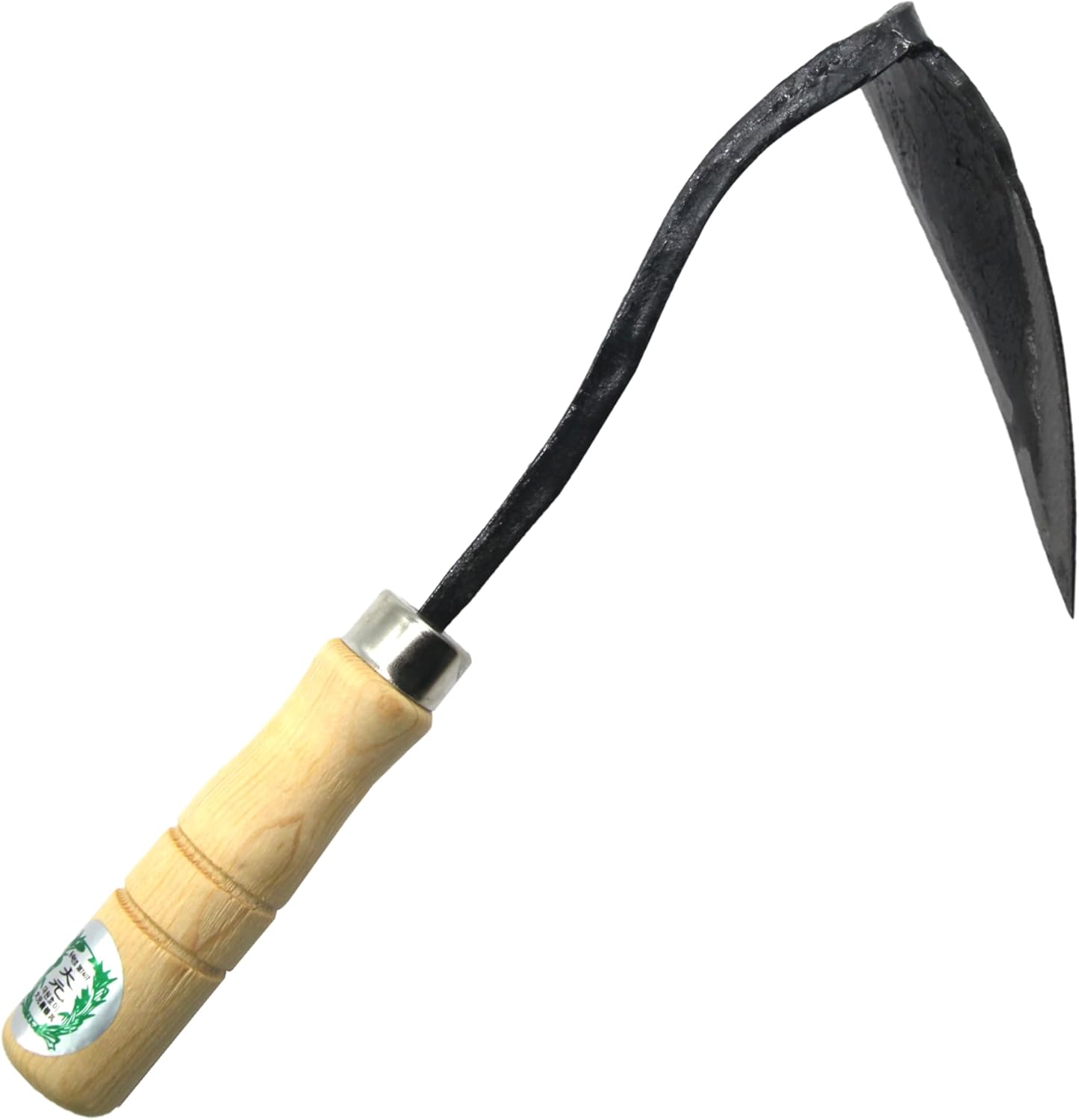
Ho-Mi Digger - Korean Triangle Blade
Fine Gardening receives a commission for items purchased through links on this site, including Amazon Associates and other affiliate advertising programs.








Comments
Log in or create an account to post a comment.
Sign up Log in